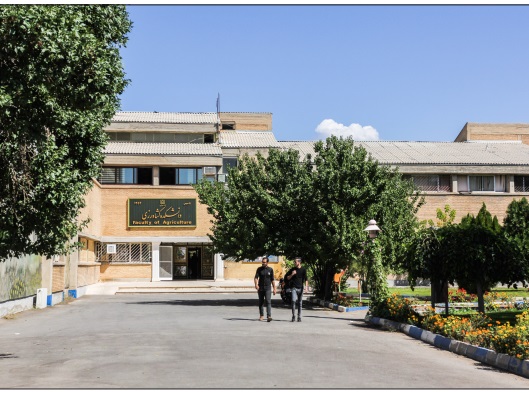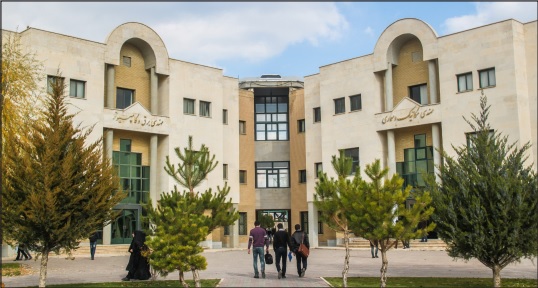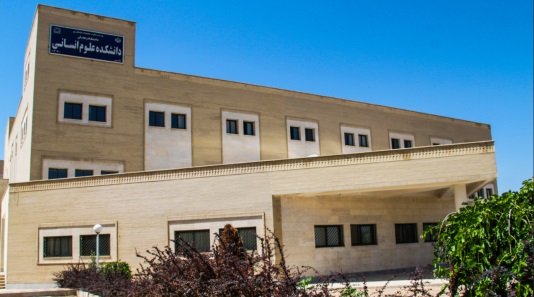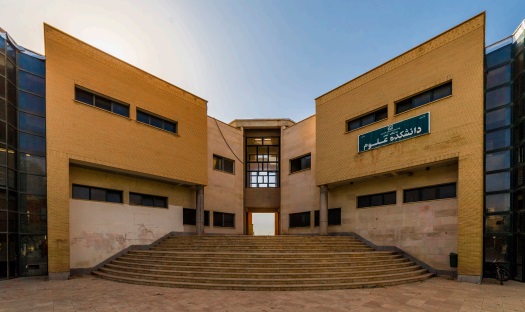Since 1975, the University of Zanjan (ZNU) has been developed in different fields and has been ranked as one the top comprehensive public universities in Iran. Although it was established as an agricultural higher education institute in 1975, today it has been developed in five main faculties, including Agriculture, Engineering, Humanities, Art and Architecture, and Science, which comprise over 39 departments (35 educational and 4 research departments). This public university has 156 undergraduate and post grad-uate (master & PhD) programmes with 400 permanent and full time academic members who have been educated from high ranked international and national universities, and they are dedicated to teaching, research and consultancies. Students enroll in this university after being selecte d6 competitively through the national scientific exam. At present, this university has 10000 full time students, including 65% undergraduate, 35% postgraduate students. Moreover, both undergraduate and postgraduate courses are offered to international students from different continents. The ZNU is committed to provide a pleasant environment for learning and to contribute to both scien-tific knowledge and the development of societies at local, national and interna-tional levels. You are warmly invited to join us and have collaborations with this university.
University of Zanjan as a sustainable university
The ZNU is among the top 47 greenest university campuses of the world and the greenest university of Iran, which follows sustainability indica-tors for setting and infrastructure, energy, research, education, waste manage-ment, water management and transportation.
This comprehensive university is located in a semiarid area with a campus area of 421 ha and is 6 km away from the Zanjan City, centre of the Zanjan Province. In over four decades, it has expanded its tree cultivation to over 72 hectares, and its total vegetation area covers over 94 percent of total campus area. The university has increased and improved its investment on sus-tainability, smart buildings and water management in both buildings and vegetat-ed areas.
The waste management programmes have been implemented through using electronic correspondence and document submission in different activities of the university; separating plastics, glasses and papers and waste recycling; toxic waste handling in all labs; composting organic waste; inorganic waste man-agement; and recycling sewage disposal. The university has provided free buses and shuttles to both staff and students inside the campus and between the city and campus to reduce private car use. Developing renewable energy for the fu-ture is still a challenge for this university and needs both innovation and invest-ment.
The University of Zanjan is one of the steering committee members of the UI GreenMetric World University Ranking Network and it tries to enhance page 20 University of Zanjan its scope to contrib-ute much more on sustainable development goals and play anpage 22 University of Zanjan important role in innovation an technology research and development in sustainability; enhancing staff an students’ d sustainability knowledge and social capacities; changing the campus environment to an Eco-friendly and sustainable environment; and enhancing social and human capacities of communities and public and private institutions. The ZNU has been selected by the United Nations Academic Impact, to act as the Hub of the internationally.
Introduction
The ZNU consists of four main faculties including Agriculture, En-gineering, Science and Humanities.The enrolled students in the academic year of 2017- 2018 have been 9830 in 165 undergraduate and postgraduate programmes which consist of – Bachelor degree (BA/BSc): 6366 students in 39 programmes -Master (MA/MSc): 2775 students in 88 programmes -PHD Candidates: 689 students in 38 programmes The University has almost 1000 full time and permanent staff, including 400 PhD full time academic members (60 percent assistant professors, 40 percent associate professors and professors). Almost 400 part time academic staff also work in the university involving in research, education or technology development.
Faculties & Departments

Faculty of Agriculture
The Faculty of Agriculture began its educational activities in 1975, launching undergraduate programs in agricultural management (Agronomy and Animal Science).
Following that, the departments of Agricultural Extension, Communication and Rural Development, Horticulture, Plant Protection, Soil Science, Apiculture, Water Engineering, and Food Science and Technology were established. This faculty’s students are engaged in theoretical and practical learning, which include 776 students in 8 BSc programmes, 505 students in 28 MSc programmes, and 229 students in 12 PhD programmes. This faculty has provided 39 laboratories, 5 workshops, arable and permanent land farms, diary poultry and sheep farms for teaching and research.
Rural areas of Iran have also provided feldwork facilities for agricultural extension and education, sustainable rural development, and natural resources management.
The faculty has 77 academic staff dedicated to teaching, research and consultations to the nation and local communities.
This faculty has conducted international, national and regional research projects, particularly related to animal and plant breeding, biotechnology, agronomy, plant protection, agricultural extension and rural development, natural resources management, sustainable development, food science and water engineering.
Further information is provided in the faculty’s website: http://www.znu.ac.ir/agriculture/

Faculty of Engineering
The Faculty of Engineering began its educational activities in 1987-88, launching civil engineering programs. Following that, the departments of Electrical Engineering, Mechanics, Architecture, Computer Engineering, Geomatics, Mining, and Chemical Engineering, as well as Art /Painting were established. Currently this faculty admits students at both undergraduate and postgraduate programmes in 8 departments. In recent years, graduate level courses of the faculty have shown quantitatively and qualitatively signifcant growth. Since 2018, the Faculty of Architecture and Art have been separated from this faculty. The faculty admits 2383 students in 10 BSc, 649 students in 16 MSc and 167 students in 8 PhD educational programmes. In the past few years, the faculty members have increased to 105 academic staff and have been promoted.
Further information is available in the faculty’s website: http://www.znu.ac.ir/engineering

Faculty of Architecture and Art
The Faculty of Architecture and Art was separated from the Faculty of Engineering in 2017 and includes the departments of Architecture and Art/Painting. Currently this faculty admits students at both undergraduate and postgraduate programmes: 255 students in two BSc and BA, and 65 students in one MSc programmes. In the past few years, the faculty members have increased to 12 academic staff and have been promoted.
Further information is available in the faculty’s website: http://www.znu.ac.ir/engineering

Faculty of Humanities
The Faculty of Humanities began its educational activities in 1991, admitting 43 students in Persian Language and Literature Education courses then the faculty developed by establishing other courses and departments. Currently this faculty has 10 departments with 1758 students in 12 BA programmes, 679 students in 20 MA programmes and 75 students in 5 PhD programmes. This faculty has also signifcantly been developed in terms of academic members (83 permanent staff), infrastructure and research projects. This faculty has engaged in many national and regional research projects regarding rural and urban geography, management, literature, economics, history, climatology and philosophy. It hosts a regular annual conference on ethics and philosophy.
Further information is available in the faculty’s website: http://www.znu.ac.ir/humanities

Faculty of Science
Faculty of Science began its educational activities in 1990-91, launching undergraduate programs in pure chemistry with 44 students and 6 full-time faculty members. Following that, the faculty admitted students in chemistry education, physics education, mathematics education, geology, biology, pure chemistry, pure mathematics, pure physics, applied mathematics, applied chemistry and environmental science at undergraduate, MSc and PhD level. Graduate studies in physical chemistry and mathematics were launched in 1994 and 2000, respectively, admitting MSc students in these felds. In addition, PhD courses began with inorganic chemistry in 2001. Currently, this faculty has 7 departments with 7 BSc, 23 MSc and 13 PhD programmes, which include 1194 BSc, 877 MSc, and 218 PhD students respectively. The academic members of this faculty have increased and promoted to 114 permanent staff. The faculty’s educational and research facilities include: laboratories and workshops, observatory, the Museum of Natural History, library, the faculty’s computer site equipped with feld-related software, online facilities, and computer-assisted classes.
Further information is available in the faculty’s website: http://www.znu.ac.ir/sciences

